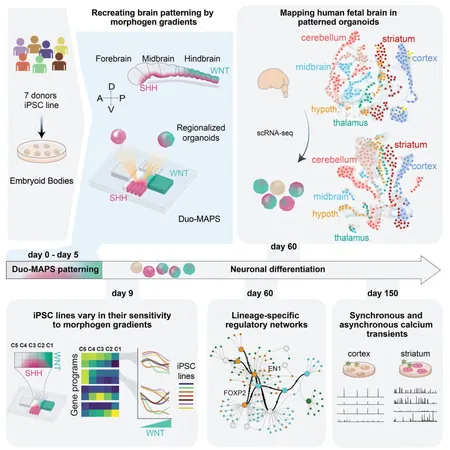
Unlocking the Mysteries of Early Brain Development: How Morphogens Shape Our Minds
2025-05-01
Author: John Tan
The Brain’s Blueprint Begins Early
Just weeks after conception, our brain’s architecture begins to take form, driven by specialized cells known as stem cells. A groundbreaking study from Yale University reveals that morphogens—molecular masterminds—play a crucial role in guiding these stem cells as they evolve into specialized brain cells.
Morphogens: Nature's Traffic Cops
These morphogens act like traffic cops, directing gene activity to dictate how stem cells differentiate. This innovative research, led by experts at Yale, uncovers the fascinating variability in how these morphogens affect stem cells, not just across different individuals, but even within the same person’s cells.
Flora Vaccarino, co-senior author of the study, emphasizes the implications for understanding brain development, stating, "This opens a new chapter in how we explore the differences in development influenced by genomic changes and epigenetic factors."
Revolutionary Device Reveals Hidden Dynamics
At the heart of this study is a cutting-edge device known as Duo-MAPs. This invention allowed researchers to expose human stem cell-derived organoids to two critical morphogens: WNT, which operates along the central nervous system’s posterior-anterior axis, and Sonic Hedgehog, which functions along the ventro-dorsal axis.
Mapping the Developing Brain's Response
Over just five days, the concentration and location of these morphogens were found to control the gene activity essential for structuring the brain. This high-throughput approach revealed striking differences among organoids from various donors and stem cell lines, indicating that responses could vary widely.
For instance, some stem cell lines displayed heightened sensitivity to WNT, activating genes primarily at the hindbrain's base, while others shifted focus toward the brain's anterior regions, such as the developing cortex.
Individual Variability and Its Implications
Even more interesting, the study found that variations in gene response to morphogens occurred not only between individuals but also among stem cell lines derived from the same person. This suggests that factors such as epigenetic changes or mutations post-conception significantly influence how these cells react.
A Robust Developmental Process
The research illustrates that human brain development is not a straightforward process; it adapts to varying genetic backgrounds and cellular responses. Levchenko, another co-author and director at the Systems Biology Institute, commented on the robustness of brain development, highlighting how brief exposure to morphogens can trigger profound changes.
"This research provides a framework for more precise modeling of human development, linking genetic backgrounds to specific developmental processes like never before," he stated.
A New Era of Understanding Brain Development
As we uncover these complexities of early brain development, this study paves the way for future advancements in medical science, potentially affecting how we understand neurological disorders and developmental anomalies. The findings truly shed light on the fluid and dynamic nature of how our brains are built, offering insights that could transform the field of developmental biology.




 Brasil (PT)
Brasil (PT)
 Canada (EN)
Canada (EN)
 Chile (ES)
Chile (ES)
 Česko (CS)
Česko (CS)
 대한민국 (KO)
대한민국 (KO)
 España (ES)
España (ES)
 France (FR)
France (FR)
 Hong Kong (EN)
Hong Kong (EN)
 Italia (IT)
Italia (IT)
 日本 (JA)
日本 (JA)
 Magyarország (HU)
Magyarország (HU)
 Norge (NO)
Norge (NO)
 Polska (PL)
Polska (PL)
 Schweiz (DE)
Schweiz (DE)
 Singapore (EN)
Singapore (EN)
 Sverige (SV)
Sverige (SV)
 Suomi (FI)
Suomi (FI)
 Türkiye (TR)
Türkiye (TR)
 الإمارات العربية المتحدة (AR)
الإمارات العربية المتحدة (AR)